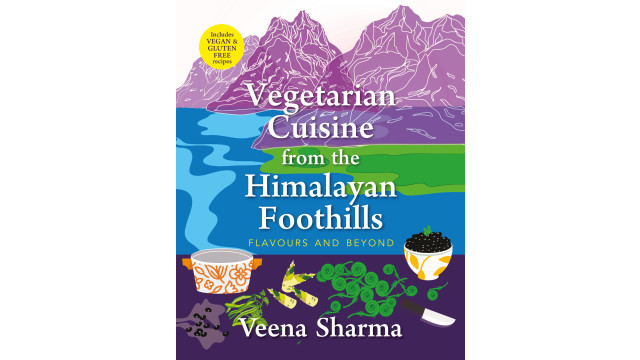Gandhrayan

Latin name: Angelica glauca
Other names: gandherni, chorak
Uses: herb, spice, medicinal
What is gandhrayan?
Gandhrayan is an aromatic plant with large, toothed leaves and — like its relatives carrot and celery — dense white or purple umbels, or flower clusters. The plant is harvested for its brown roots, about the size of peapods. These are used fresh or dried in medicinal and culinary applications.
Why is gandhrayan healthy?
Locals in remote Himalayan villages use powdered gandhrayan roots to treat vomiting in children, stomach troubles, and for cardiovascular health in general. Ayurveda also prescribes the herb for respiratory illnesses, joint pains, and menstrual irregularity. Various scientific studies validate the plant’s medicinal potential. The roots contain coumarins, organic compounds with antimicrobial, antithrombotic, anti-inflammatory and vascular benefits.
What does gandhrayan taste like?
Fresh gandhrayan roots are aromatic, very herbal, earthy, and taste a bit like celery. Due to the concentration of essential oils, the dried version has a more potent fragrance. It adds strong peppery, zingy, and herbaceous notes to soups and stews, and a lingering warmth in the mouth.
How do I use gandhrayan?
A tiny bit of gandhrayan is all you need to spice up a family-size meal. Thoroughly wash and soak overnight before adding it to broths, soups, and curries. In the Kumaon region, one of the most beloved recipes seasoned with the herb is rass, a black soybean soup. Other Himalayan communities add a pinch of ground gandhrayan to lentil stews for its digestive benefits.
What does gandhrayan pair well with?
Use it in combination with other spices popular in South Asian cooking. Locals regard gandhrayan as a warming spice and prefer to use it in the winter.
How to buy gandhrayan:
If you’re unable to find it fresh, dried gandhrayan can be found in Indian markets or online.
Where does gandhrayan grow?
In India, Angelica glauca grows in the alpine stretches of Kashmir, Chamba in Himachal Pradesh, and the Kumaon mountains in eastern Uttarakhand. The species is also found in the Arctic and New Zealand.
Fun gandhrayan fact:
Gandhrayan is a critically endangered Himalayan forest species, according to the International Union for Conservation of Nature (IUCN). The need for conservation is not lost on locals. In Surd, a village in Rampur, Himachal, gandhrayan roots are harvested only once a year, on one day in May, to allow the species more time to thrive and regenerate.








